The fundamental rule of troubleshooting, repeated by mechanics like the mystic syllable “ Om,” is that that an engine will run if it has compression, fuel, and spark. The rule is true in the negative sense—without compression, fuel, or spark, the engine cannot run. But having all three guarantees nothing. Compression, spark, and fuel must be synchronized, and each of these must be of the correct intensity. A weak spark is worse than useless since it can delude the mechanic; too much fuel is as bad as too little; and the cylinder must generate at least 40 pounds per square inch (psi) of compression.
Ideally, a guide of this sort ought to give you a list of faults and a sure-fire cure for every one. If the engine behaves in this manner, do this or that, and so on. The latter part of this section attempts to do just that, but you should realize that the only way engines are repaired is by trial and error. Knowledge of theory and engine hardware helps (Figs. 2-1 and 2-2), as does experience. But there is a great gulf fixed between abstract knowledge about engines and the particular one you are trying to fix. The only way this gulf can be bridged is by patient experiment.
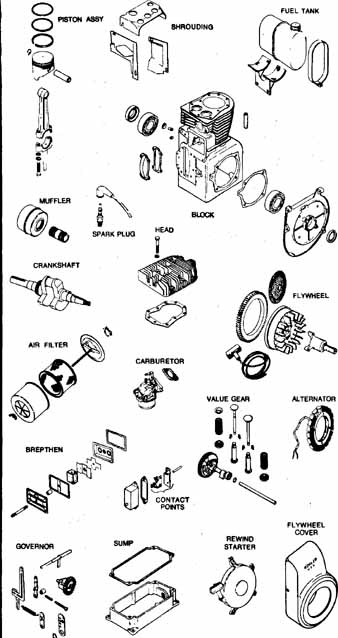
Fig. 2-1. A Kohler K-341 single-cylinder industrial engine in exploded
view.
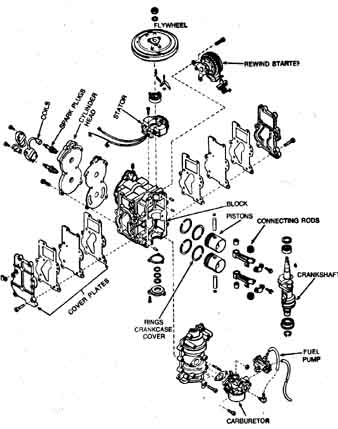
Fig. 2-2. A Power Products 380 Series twin-cylinder outboard powerhead.
An engine is a collection of systems. The piston, rings, bore, valves, cylinder head, and head gasket act together to compress the mixture. The ignition system delivers the spark to ignite the compressed air-fuel mixture, and the carburetor mixes air and fuel in the proper proportions for combustion. Each system consists of subsystems that can be further broken down into individual parts.
All systems must be coordinated to convert gasoline and oxygen into heat and motion. Most of .the coordination is fixed during assembly. This includes the valve or port timing, the initial ignition setting, and the like. Sometimes different systems influence each other. For example, on outboards and on many motorcycles the ignition timing advances with engine speed. In a real sense the position of the throttle determines the timing.
The whole art of troubleshooting is to isolate the mal function in a particular system or subsystem. Really experienced mechanics can usually pinpoint which part has failed.
Most malfunctions involve a single system and so are relatively easy to diagnose. Multiple system malfunctions seem to be the special province of small engines. Usually no system has failed completely, but several or all are below par. For example, the engine may have low compression that makes starting difficult but possible. A second problem might be a choke butterfly which fails to close completely. With decent compression the engine might start with a cracked choke, but the two together mean that you could crank until your arm falls off. These multiple system problems occur in old, well used engines and in engines that have suffered from incompetent mechanics. If this is the case, try to go behind the mechanic, undoing whatever he did. Begin with the carburetor. The standard starting adjustment is on-and-one-half turns open on both needles. Inspect the bolt and screwheads for wrench marks. Follow the mechanics trail through the engine, correcting as you go.
Basket cases, engines brought to the shop in bits and pieces, can be frustrating. I remember one Briggs and Stratton that was delivered by a gentlemen who said he didn’t have time to put it together. Several hours later we had it assembled, but it took most of the afternoon to discover why it wouldn’t spark. We made every test we could think of and not trusting our coil tester, substituted a known-good coil, condenser, and point set. Still no fire. Finally, one of the mechanics compared the customer’s flywheel to one for the same model Briggs. The magnets were a few degrees apart on the rim. When we installed the correct wheel, the engine ran perfectly.
The worst troubleshooting problems are those that you cause yourself. One way of causing these problems is to have too much faith in what the owner or other mechanics tell you. Listen to other people (two heads are sometimes better than one) but don’t accept their opinions blindly. And don’t trust another mechanic’s word until you personally have verified that it is sound.
Another danger is believing too much in your own experience or in your own theories. Diaphragm carburetors tend to cause hard starting after they have sat for a few months. But this does not mean that every diaphragm carburetor should be overhauled. The zener diode is the Achilles’ heel of late-model English motorcycles. But this is no reason to assume that every Triumph or BSA with frazzled electrics needs a new diode. A hundred other things could be wrong.
And finally, try not to be in too much of a hurry. You will get into trouble if your hands move quicker than your brain.
Have a fairly plausible reason for everything you do and keep track of any adjustment changes. Before you are finished, you may have to return these adjustments to their original settings.
Ignition Checks
According to one study, nearly nine out of ten small engine failures are caused by a breakdown in the ignition system. Many experienced mechanics assume that the ignition is at fault even when the evidence seems to point to the fuel system or to weak compression. And most of the time the mechanic is right.
Treat ignition systems with respect. The output is not lethal for healthy people; but you can be taken unawares and hurt yourself in the reaction. Mechanics have been bitten by a spark plug and put their hands in the fan.
Begin by looking for the obvious. If the engine has a switch, see that it is on. If equipped with a battery, check that it is charged. On motorcycles, this is easily done by sounding the horn. A surer method is to test the battery with a hydrometer. You should obtain a reading of at least 1.230 for a nominal 75 percent charge. The quick and dangerous way of testing a battery is by shorting the terminals with plier handles. A “hot” battery will splatter sparks—and can explode in the process.
Disconnect the spark plug wire or high tension lead, as it is sometimes called, and hold it so that the end is about 1/16” from the block. Figure 2-3 shows how a spark plug adapter and alligator clip can be used in a safe manner. Being careful not to touch the metal terminal, crank the engine. You should hear a “snap” and see a heavy, blue spark jump from the terminal. A thin spark or one that is any other color than blue means that the ignition is defective.
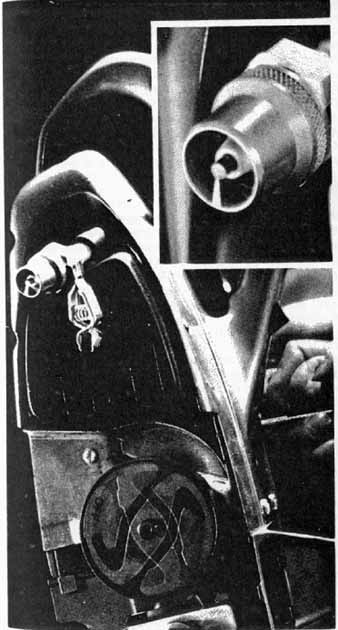
Fig 2-3: Using a test plug to check ignition .
Assuming that the spark is okay, the next step is to check the spark plug. The porcelain insulator should be clean and unbroken. A crack in the insulator will short-circuit the plug, rendering it useless. The nose of the plug—the part that fits into the engine—should be reasonably clean and dry. While the plug is out, position the metal part against the engine, connect the high tension lead, and with your hands away from the ignition parts, crank. It should fire; if it does not, a new plug is clearly indicated. But a word of caution: Many times a spark plug will give off a healthy blue spark in the atmosphere, and refuse to fire in the engine when it is working against compression. The only valid test is to substitute a known good plug. i.e., one that runs in a similar engine. Even brand-new plugs are not to be entirely trusted. Many a poor mechanic has been driven up the wall by that one new plug out of a hundred or so that is faulty.
Fuel System Checks
Again, begin with the obvious. Is there gasoline in the tank? Is it clean? Often you will find that water has condensed in the tank. And gasoline does deteriorate with age. The highly flammable aromatics evaporate, leaving varnishes and oils which are difficult to ignite. If you find contaminated fuel in the engine, chances are that the owner also has gasoline on hand which is also contaminated in the container. Is the fuel tap on? A few motorcycles have a vacuum valve on the fuel line which can fail.
See if gasoline is actually reaching the carburetor. Walbro carbs (fitted to Tecumseh and Clinton engines) have a float chamber drain for this purpose; when depressed, gasoline should flow out and around it. English Amal and a number of other motorcycle carbs have a “tickler” positioned above the float. It acts to flood the carburetor. Many outboards have a brass drain plug which is screwed into the side of the chamber. Other types must be partially disassembled to determine if they are receiving fuel.
Power Products diaphragm-type carbs, which are becoming nearly universal on lawnmowers, chain saws, and go-karts, require a special procedure. First, remove the air filter. Then locate the small hole drilled into the bottom of the diaphragm cover. Insert a piece of stiff wire or a small Allen wrench into the hole and push upward about ‘Is”. After a few seconds, gasoline should dribble out of the air intake.
Carburetor stoppages occur at the inlet screens (which may be a separate assembly or integral with the inlet fitting) and at the jets. Clean screens with lacquer thinner or acetone. Jets are best unplugged with compressed air, although you can use a broom straw. Do not employ a wire as the slightest deformation of the’ jet will upset the air-fuel ratio.
Suction-type carbs, sometimes called “mixing valves,” are found on many Briggs and Stratton engines and on some of the inexpensive Sears, Roebuck lawnmowers. Identification is easy: This type of carb is always mounted directly on top of the gasoline tank. They have no float, though some have diaphragms, and work like a flit gun—fuel is sucked through a tube from the tank, and then metered through an adjustable jet and into the engine. These devices are very reliable, if fuel is not allowed to stand in the tank for a long period. When this happens, the pick-up tube becomes clogged and the engine will not start.
Now is a good time to inspect the choke. Is it closing completely? On many lawnmowers with remote controls, the choke linkage can work itself out of adjustment and cause hard starting (Fig. 2-4).
Paper air filters can also cause hard starting. Most modern engines are equipped with them because paper is the most efficient filter element known. The problem is moisture. A wet filter will swell and prevent air from entering the engine. Most filters have been engineered so that they will stay dry even in a driving rain—but an over-enthusiastic application of a water hose or an attempt to clean one of these filters with solvent will ruin it. The only fix is to throw away the soaked filter, dry out the element holder, and replace the element.
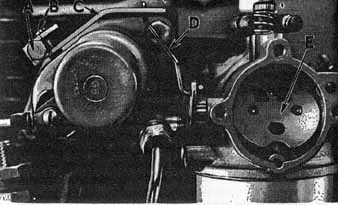
Fig. 2-4. Check the choke position. Choke plate “E” must be closed completely for cold starting.
Having made the above checks, crank the engine through a few times, stop, and remove the spark plug. The nose of the plug should be just damp and smell of gasoline. Too much gas is as baa .as too little. If the plug is soaking wet, suspect that the filter is stopped up or (more likely) that the engine has been cranked too much with the choke full on. The remedy is to rapidly spin the engine with the plug still out. The up and down movement of the piston will cause a draft which will eventually dry the chamber. Another, faster, way is to blow the chamber out with compressed air, but be sure your compressed air supply is clean and dry.
A hot engine can flood without wetting the plug. Engine heat evaporates the fuel, and at more than six percent concentration (by weight) in air, gasoline ceases to be explosive. You can detect this condition by the swirl of heated vapor pouring from the spark plug port.
There are two special cases concerning flooding. Two-cycle engines can fall victim to crankcase flooding, that is, the crankcase can become partially or completely full of liquid fuel. Some engines are provided with a crankcase drain just for this eventuality. However, the usual procedure is to crank until the fuel is forced out of the crankcase and into the combustion chamber, where it will eventually evaporate. The other special case is oil flooding. This can occur in a two-cycle if the fuel mix is too “rich” in oil (12 parts gasoline to 1 part oil is the absolute limit—most engines operate best at between 16 and 20 to 1 and a few large outboards can go as lean as 50 to 1 with the proper oil). An oil bath air filter which has been overfilled can also cause oil to get into the combustion chamber. The most serious oil flooding occurs in four-cycles which have been tilted so that the head is down. Oil runs out of the crankcase, down the bore, past the piston rings, and into the chamber. The standard procedure is to first flush the chamber with lacquer thinner or lighter fluid, let it dry, and try again.
Compression Checks
A rough-and-ready way to check compression is to remove the spark plug and hold your thumb over the port. As the engine is pulled through, you should feel an alternate blowing and sucking action. On two-cycles this will occur with every revolution; on four-cycles with every second one. But a compression gauge is more accurate and quite inexpensive (Fig. 2-5).
For accurate readings, block the throttle and choke open and record the compression on the fourth stroke. A squirt of oil in the cylinder will enable you to distinguish between valve and ring problems. Oil should improve ring sealing and give higher readings but will have no effect on upper cylinder malfunctions.
When making the compression test, you should listen closely for unusual noises. Scraping or squealing (Fig. 2-6) means that a bearing surface has failed. A tapping sound once every revolution means a very loose connecting rod. For either problem, teardown is indicated.
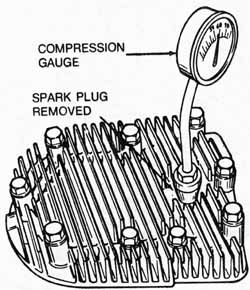
Fig. 2-5. A compression gauge with a cone-type adapter mounted on
a Tecumseh head. Most mechanics prefer gauges with threaded adapters.
First test: without oil in cylinder Second test: squirt a few drops
of oil onto piston through spark plug hole. Turn engine over 6 to 8
revolutions to get oil transferred to piston ring area, then make compression
test.
Suppose that the engine develops no compression. On four-cycles, this most often means that a valve has stuck open. You can usually free the valve without removing the head. Work from the valve chamber. -On two-cycles, the problem is usually a burnt piston. But on either type, the complete absence of compression can mean a thrown rod.
Weak compression—and here is where experience or a gauge is necessary—can be caused by a number of factors. In general, two-cycle engines are low-compression devices to begin with. Many of them will not give a reading of more than 60 pounds per square inch at cranking speed, while equivalent four-cycles have a compression release which automatically comes into play during cranking. The most common of these is the Easy Spin system on late-model Briggs and Stratton products. To get an accurate reading on these engines, the flywheel must be spun counterclockwise.
The usual causes of low compression are leaking valves, worn or stuck rings, and leaking head gaskets. Compression leaking past a head gasket can often be heard as the engine is spun over. Some motorcycle engines feature a compression release operated from the handlebar. Sometimes a release—which is no more than a tiny poppet valve—fails to seat. You can feel the air escaping around it.
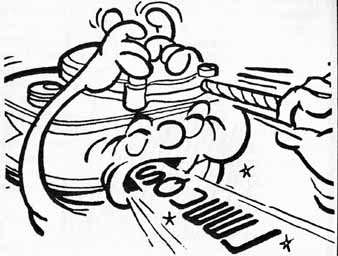
Fig. 2-6. When checking for compression, listen for unusual noises.
TROUBLESHOOTING SPECIFIC SYMPTOMS
Eight of the most common small-engine faults are described for the troubleshooter.
Failure To Start When Hot
Perform the same general checks previously described. Work quickly though, before the engine cools. If the ignition breaks down—an almost foregone conclusion—suspect the condenser and coil in that order. After you have checked the ignition, look for signs of flooding or of fuel starvation. Flooding betrays itself as carbon fluffs en the spark plug insulator and as an acrid smell in the exhaust. It may be caused by a choke butterfly that is not opening fully, an over-rich adjustment on the main jet (an over-rich low-speed adjustment will usually not put the engine out of commission, although it will affect the idle), and by float or diaphragm problems. Fuel starvation under these conditions is transitory and will not show at the spark plug. Suspect clogged vents at the carburetor float bowl chamber and tank, restricted fuel filters, or pump failure. The condition may also be caused by debris in the tank that periodically covers the outlet.
Before you return the engine to regular service, run it for an extended period and repeatedly check for hot starting. An engine in good tune should start on the first or second attempt, whether cold or hot.
Lack of Power
Ascertain for yourself whether or not the engine is performing as it should. Many times, people have an exaggerated notion of the potential of their machine. While you’re at it, make a thorough examination of the running gear. On lawnmowers, see that the blade is sharp and that the propulsion mechanism (if fitted) is working correctly. Often “lack of power” is no more than a loose belt. On motorcycles, look for a slipping clutch, under-inflated tires, over-tight chains, and dragging brakes. Check the track and drive system on snowmobile.
But if all else is okay, then we go to the engine, where “lack of power” can mean two separate problems. One, the engine could be missing at high speed. This is usually the fault of the spark plug or of some other component in the ignition system. Or, missing can be caused by a seriously misadjusted main jet, or even by a clogged air filter. The second case is where the engine seems to be running smoothly enough, but still fails to produce power. Suspect the ignition timing first. Then adjust the carburetor slightly richer. If the problem persists, run a compression test. On two-cycles——especially those which are operated at moderate speeds—you will often find the exhaust ports partially clogged with carbon.
Erratic Idle
First check the timing and then the point gap. Next, adjust the low-speed needle on the carb. If the engine still won’t idle, you can remove the needle and attempt to blow out the idle circuit with compressed air regulated to 30 psi. But a word of caution—blowing on the float chamber vent can cause the float to collapse. Chain saws, a few outboards, and some industrial engines incorporate a diaphragm-type fuel pump as part of the carburetor or as a separate unit. A ruptured pump diaphragm will cause a rough idle. Check for air leaks in the intake tract—at the joint between the carb and intake manifold, and between the manifold and the head. You can do this check quickly by squirting very small amounts of gasoline on these joints. If the engine speeds up, there is a leak. Look for signs of wear on the throttle shaft. On a two-cycle, erratic idle can be caused by leaking crankcase seals. And finally, on industrial engines, check the governor linkage for excessive play.
Overheating
How is the engine being used? Heavy overloads will inevitably cause overheating. And motorcycles (with the exception of a few fan-cooled models such as the small Ducati) are designed on the assumption that they will be moving. Long periods of stationary operation can destroy one.
If the problem is real, then begin by checking the lubrication system. See that the oil level is correct and that the proper grade of oil is being used. Next, check that the spark plug is the proper heat range as recommended by the manufacturer for that particular engine. Make sure that the carburetor is adjusted properly and that there are no leaks in the intake tract. Check the ignition timing.
The cooling system can also be at fault. On outboards, see that the pump is putting out sufficient water. On engines with underwater discharges, run the engine a few minutes; stop it and hold your hand against the cylinder. You will feel the cylinder grow steadily warmer over a two-or three-minute period. Now start the engine—if the pump is working properly, the head will begin to cool almost immediately. On air-cooled engines, inspect the fins to see that they are free of accumulated oil and dirt (Fig. 2-7). If the engine is equipped with shrouding, make sure that it is intact and installed correctly. Check the belt tension on axial fan models.
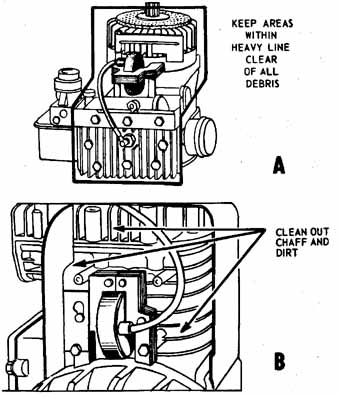
Fig. 2-7. Keep these areas of air-cooled engines clean or severe
overheating will result.
Excessive Oil Consumption
Oil consumption is a fact of life for small, air-cooled engines. Oil may leak around the gaskets and seals or it may be burned in the combustion chamber. Leaks are usually the fault of loose fasteners and tired gaskets. Fasteners can be secured with an application of Loctite, Lock-Nut, or an equivalent product to the threads Fig. 2-8). These anaerobic adhesives harden and expand when deprived of oxygen. While the level of foundry work has improved in recent years, blowholes in the castings are not unknown. These holes usually can be sealed with epoxy cement. Leaks around the crankshaft mean that the oil seals have failed. Seal failure may be precipitated by excessive main bearing clearances or by a bent crankshaft. Another cause of leakage around gaskets and seals is a clogged crankcase breather that allows pressure to build in the case Fig. 2-9). This malfunction can also force oil by the rings.
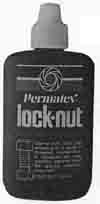
Fig. 2-8. Anerobic adhesives pre vent threaded fasteners from vibrating loose.
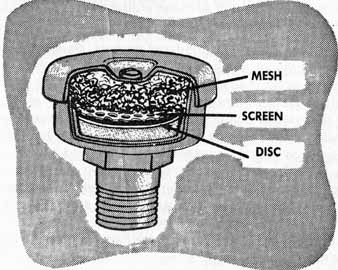
Fig. 2-9. A heavy duty breather of the type used on large Clinton engines.
Excessive smoke in two-cycles means that the oil was mixed in the wrong proportions with the fuel or that it has settled out in the tank. The fuel/oil ratio varies between engines. Low-speed, “bushing” engines require mixtures as rich as 16 parts of gasoline to 1 part oil. Sophisticated outboard motors can be run as oil-lean as 50:1. Separation of the oil and fuel can be minimized by the use of specially blended two-cycle oil and by vigorous agitation. Mix the oil and gasoline in a separate container and fill the tank just before use.
Excessive oil consumption in engines that are fitted with the auto-lube system can usually be corrected at the pump. The adjustment drill varies between manufacturers, but all pumps have a clearly marked index line corresponding to maximum delivery at wide-open throttle (Fig. 2-10). (Insufficient oil delivery is usually the result of air trapped in the lines or in the pump body. Bleed per manufacturer’s instructions.)
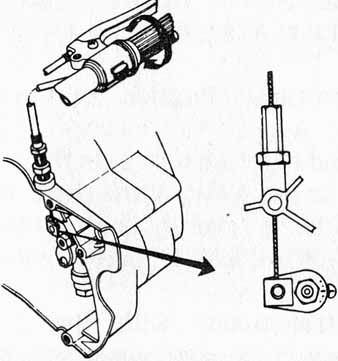
Fig. 2-10. Automatic lubricating systems must be indexed for proper
delivery.
Excessive oil consumption—generally considered to be more than 1 part oil per 400 parts fuel—in four-cycle engines is almost always the fault of the piston rings. The rings may be worn, broken, stuck in their grooves, or weakened by loss of spring temper.
Some ring wear is inevitable, but it is accelerated by worn, loose-fitting pistons, failure to change the oil, and by an inefficient air filter. Broken rings are the result of improper installation techniques, hammered-out ring grooves, or owner abuse. Lugging the engine at low speeds can shatter the rings. Low grade oil or good oil that has been repeatedly overheated oxidizes into a gum that binds the rings fast to their grooves. Overheating, either by reason a failed cooling system or because of extended full throttle operation, may heat the rings enough to rob them of temper.
Oil can be sucked into the cylinder around the valves. Heavy duty engines, intended to run thousands of hours between overhauls, are always fitted with oil seals at the intake valves. Some have seals at the exhaust valves as well, although the exhaust is not nearly as critical as the intakes. Small utility engines, even those with overhead valves, rarely have the benefit of valve seals. The fit of the valve stems in their guides is the only barrier to oil. As the guides (and stems) wear, more and more oil enters the engine. Some valve guides are replaceable; others must be reamed to accept oversized valve stems.
Vibration
Excessive vibration can usually be traced to loose motor mounts. Normally all that is required is to snug the mounts up again. Most small engines are secured by tabs or “ears” cast as part of the block or oil sump. Should these mounts break, the choice is between new engine castings or welding. Welding is not an ideal solution since it almost inevitably distorts the parts and may lay the groundwork for main-bearing or cylinder-bore failure. But it is often the more reasonable alternative. Better to take the chance on distortion than to spend more for repair parts than the engine is worth.
Most cast-aluminum alloys can be welded with a Heliarc machine using a Eutectrode No. 2101-E rod. With acetylene, use a Eutecrod No. 210 FC or the equivalent. Magnesium is harder to weld than aluminum, and some alloys are impossible to weld. The best advice is to experiment with a small sample before you put a torch to the engine. Use a Eutecrod No. 1900 in conjunction with No. 1900 Eutector flux. These materials can be obtained from Eutectic Welding Alloys Corp., 40-40 72nd St., Flushing, NY.
A bent crankshaft will also cause vibration, especially on rotary lawnmowers (Fig. 2-11). A quick way to check the shaft is to remove the spark plug and have a helper spin the engine while you watch the bolt hole in the center of the shaft. If you can detect any wobble, the shaft is severely bent. (Standard factory tolerance is 0.001”—impossible to detect with the naked eye.)
Crankshafts can be straightened with the proper equipment. Built-up cranks of the kind used on some snowmobile and motorcycle engines are intended to be straightened after assembly. One-piece shafts usually tolerate some straightening, but the operation may weaken the shaft. As far as stationary engines are concerned, a slight weakness is no problem. Vehicles and rotary lawnmowers are another matter since operator safety depends upon the strength of the crankshaft. If you decide to have one of these cranks straightened, by all means have it checked for cracks by a competent automotive machinist. The cost is nominal.
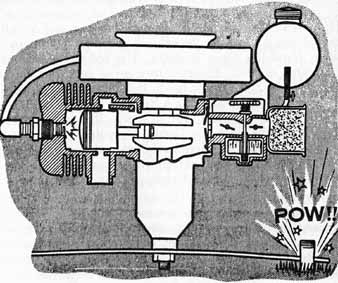
Fig. 2-11. This is why lawn mower crankshafts bend.
Noise
Small engines bark loudly when new and get louder as the mufflers corrode. Engines built more than a decade ago can benefit from one of the new style mufflers intended to meet federal noise abatement regulations. Although these mufflers are half again the diameter of original equipment, they can be easily fitted to most utility engines. Water-filled mufflers throttle the exhaust to a whisper, but are quite large and impractical for most portable installations. Motorcycle exhausts can be muffled by adding baffles to the muffler or, more easily, by fitting a flame arrestor to the end of the tail pipe. Little can be done to silence snowmobiles. Retrofitting late-model mufflers usually requires modifications to the chassis and running gear (Fig. 2-12). Chain saws can be quieted with a bit of ingenuity and proprietary (off-the-shelf) mufflers, at the cost of a fall-off in power.
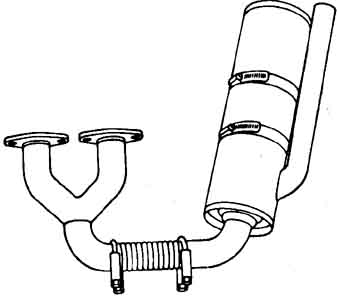
Fig. 2-12. ACS muffler used on Rockwell-JLO snowmobile engines.
The muffler may be secured by flanges and spring clamps or, in the grand tradition of American utility engines, by a ½” pipe thread. Tecumseh mufflers are held by a pair of bolts that thread into a flange at the exhaust port. Caution is required when removing these mufflers. The bolts may have lost two-thirds of their diameter because of corrosion and are certain to be fused to the block. Use penetrating oil liberally and tap the bolt heads with a hammer to shock the threads free. Turn the bolts out ever so slowly. It may be helpful to work the bolts back and forth, alternately tightening and loosening. Should one break off flush with the block, bore a 1/16” hole in the center and back the bolt out with an extractor. If necessary, tap threads in the block for oversized bolts.
Mechanical noise is a rough indicator of bearing clearances. Bearings that are too tight squeal and shriek before they “freeze” solid. Loose bearings knock in response to load. The big, or crankshaft, end connecting rod bearing is usually the first to go. You may hear a light tapping sound when the throttle is abruptly closed. Just before the bearing fails completely, the tapping becomes louder and can be heard at steady speeds. Main bearings make a similar, but heavier, sound. Tappet noise—the noise made by tappets as they soak up clearance in the valve train—is a light rattle that varies in proportion to engine speed. Tappet noise is not taken very seriously, at least on flat-head engines with fixed valve clearances.
Two-cycle engines may develop connecting rod and main bearing noise, and sometimes you can make a distinction between the two. In most cases the whole engine gives off with a dull, high frequency rattle.
Dunking (Immersion in Water)
Outboard motors occasionally “go down,” that is, are accidentally and totally immersed in water. The smaller motors should be equipped with safety chains for easier retrieval, but safety chains on the larger units can pull the transom out. To determine what course of action to take, it is necessary to know exactly what happened. If the engine rested on a soft bottom, you can assume that it is silted and must be torn down completely. On the other hand, if it went down in clean water, it may be possible to restart it immediately without damage. But a running engine, especially one that was at or near full throttle, might have damaged itself by ingesting water. Time is also an important variable. Immediate “first aid” can save a tear-down. Even a few hours in the air with the unit inoperative can start a corrosion problem which can only be corrected by full disassembly.
To re-start a dunked engine, it is necessary to work quickly. Every minute the unit is exposed to air counts. Remove the cowling, flywheel, carburetor and reed valve assembly, and the spark plugs. Turn the engine so that water will drain out of the crankcase. If methylal (methyl alcohol, NOT rubbing alcohol) is available, splash it around the crankcase to absorb the water. Crank the engine repeatedly. The magneto coils should be dried and the points wiped off. Disassemble the carburetors and fuel pump, and drain the gasoline tank. It is wise to spray all exposed metal surfaces with a preservative such as WD-40. Assemble and run the engine for at least 30 minutes to evaporate any standing water. Later, if the engine begins to knock, expect that the lower main bearing was not completely dry. This is the most vulnerable friction surface on the engine and even a tiny speck of rust will ruin the bearing.
Racing mechanics can re-start a dunked engine in five minutes or less. Their procedure is to drain the carburetor float bowls, wipe the points dry, and drain the water out of the cylinders through the spark plug holes. If the engine starts, it is assumed that it will be OK until the next overhaul.
Racing outboards have cut-down flyweels which minimize hydrostatic damage. Hydrostatic lock occurs when an incompressible liquid—in this case, water—is trapped between the top of the piston and the cylinder head. The inertia of the flywheel and the crankshaft slams the piston against the column of water. Something has to give. It may be the head which cracks, a sheared flywheel key, a rod, or the crankshaft. There is also the very real possibility of warpage of the cylinder bores and the pistons, caused by the sudden cooling of these parts. Obviously, engines with such kinds of damage must be torn down for repair.
The important thing is to prevent corrosion during the interim. The entire unit, or the power head on larger engines, should be immersed in a tub of oil or fresh water. If fresh water is not available, it is better to use salt water than to allow the unit to be exposed to air.
As soon as you can, start the teardown. Delaying repair more than 12 hours is asking for trouble. But if delay is unavoidable, say over a weekend, the engine may survive if kept immersed. Expect, though, that the coils might become shorted. Dry them under a lamp, never in an oven. The power-head should be torn down completely. Check the crankshaft, rods, and the cylinder bores for trueness. Each part should be washed by hand and immediately oiled to remove any trace of water, salt, or silt. Electrical connections should be scraped bright, and the cooling passages should be thoroughly flushed with kerosene to clear them of debris, and then bake them dry under a lamp. It is good practice to paint the engine to prevent corrosion formation on its other surfaces. Use a paint especially formulated for adhering to aluminum, but avoid marine anti-fouling paint. These paints contain metals which will increase corrosion on aluminum.
Prev: Theory
of Operation
Next: (coming soon) Ignition Systems